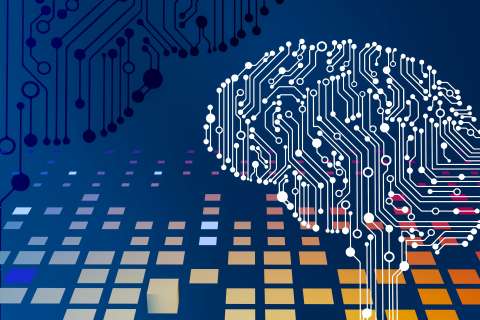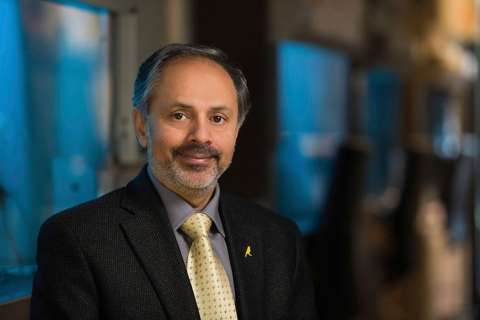A new UCLA Health study highlights concerning gaps in how child neurologists understand and address motor difficulties in children with autism, despite research showing these movement problems affect the majority of autistic children and can significantly impact their development.
The study, published in the journal Pediatric Neurology, found many child neurologists are not aware that motor impairments are an associated deficit of autism and often lack important education around this in training.
Child neurologists play an important role in the care of autistic children and are uniquely trained to identify and diagnose motor impairments. Thus, researchers surveyed 100 child neurologists and neurodevelopmental specialists across the United States about their knowledge and clinical practices regarding motor difficulties in pediatric autistic patients. The anonymous survey was conducted in April 2024 supported by the Health Resources and Services Administration funded Autism Intervention Research Network on Physical Health, with responses collected through email, social media and national neurology conferences.
Led by UCLA pediatric neurologist Dr. Rujuta Wilson, a leading expert in motor impairments in autism, the study revealed significant knowledge gaps among specialists who frequently treat children with autism.
- Only 36% of participating neurologists correctly identified motor deficits as an associated feature of autism despite this being included in diagnostic criteria since 2013.
- More than half underestimated how common these problems are, believing they affect 15% to 50% of autistic children when research shows the rate may be as high as 87%.
- Many neurologists expressed difficulty conducting detailed motor assessment due to behavioral barriers or time constraints that do not allow for the inclusion of common standardized assessment.
“Motor concerns are just as common, if not more common, than verbal language difficulties in children with autism, yet they're being significantly underrecognized and undertreated," said Wilson, an assistant professor in pediatric neurology at UCLA Health and psychiatry and member of the UCLA Center for Autism Research and Treatment.
Population wide studies have found similar results regarding a discrepancy.
One study in Australia found that while nearly 80% of autistic children had motor impairments on standardized testing, clinicians only detected these problems in 1.3% of cases. This represents a massive gap between what we know from research and what's happening in clinical practice.”
Motor difficulties in autism can include delays in crawling or walking, poor coordination, trouble with balance, abnormal walking patterns and problems with fine motor skills like grasping objects or drawing, according to previous research by Wilson. These issues often emerge in infancy and can persist without treatment, creating cascading effects on a child's ability to explore their environment, develop language skills and engage socially with others, Wilson said. Research shows that when toddlers can't transition smoothly to walking, they miss out on developmental opportunities that come from greater access to objects and more sophisticated interactions with caregivers.
Wilson found many obstacles prevent better recognition and treatment of motor difficulties. Child neurologists cited challenging comorbidities like seizures, lack of knowledge about motor assessment tools and insufficient time during appointments as primary barriers. Many reported they don't have the clinical bandwidth to screen for motor impairments beyond routine neurological exams, as standardized motor assessments require specialized training and can be time intensive. For this reason, Wilson and co-authors included guidance on assessment of motor function in autistic children with suggestions for easily accessible toys and objects to evaluate fine motor control, strength and coordination. Dr. Wilson notes that observation of how children access these toys can provide valuable information on their motor abilities and challenges.
“We need to ensure that training on the assessment of unique motor difficulties in autistic individuals is well developed during medical school and residency training,” Wilson said. “There are important considerations when working with this population, including sensory sensitivities, language differences, and behavioral challenges, and there are strategies and support that can be used to ensure autistic individuals receive the most comprehensive care.
“Preparing medical students and residents with these strategies is imperative to ensure they can provide best practices care and evaluation not only for motor impairments but even other co-occurring medical conditions,” Wilson continued. “It's also crucial that we develop more practical screening tools that can be used efficiently in clinical settings and are inclusive of individuals with intellectual disability and those who are minimally verbally, including caregiver report measures that don't require extensive training or time to implement.”
Study co-authors are Drs. Harika Kottakota and Emily Hotez of UCLA Health.
The study was supported by the National Institute of Child Health and Human Development (K23HD099275), Health Resources and Services Administration (HRSA-20-054), the Department of Health and Human Services, Administration for Community Living (90DDUC0129), the Simons Foundation (977910) and the Intellectual and Developmental Disabilities Research Center (1P50HD103557).




